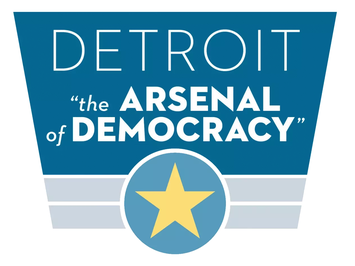
Here’s something I think about a lot. I believe in that Shakespearean phrase “what’s past is prologue”, meaning that past events serve as a good indicator of what the future may hold. Or, as AI just told me when I asked for its interpretation of the phrase, the past provides context and background for understanding the present and planning for the future.
In the context of cities, this applies to the economic histories of numerous cities across America. Throughout history cities have been founded for economic, social or cultural reasons. They are places where people initially came together to trade, to administrate, to celebrate, to defend. Later on, cities would find new reasons for their existence, often built on the knowledge gained from the city’s earlier phases.
Consider New York City. A deepwater seaport connected to a river that reached deep into the hinterlands made Manhattan an excellent location for the fur trade 400 years ago. The early Dutch and later British settlers were able to bring furs from the interior to New York Harbor and shipped to Europe. More entrepreneurs sought other goods to sell across the ocean. A link to European markets was established, and that enabled other commercial ventures to flourish. That created opportunities for banking, financing and investing to grow.
Soon, New York City and business became synonymous. Very early on, it became not just the primary physical point of entry into America, but the economic entry as well, for foreign investors interested in making money, and immigrants looking for employment. That made it easy to become a city that would be skilled in media and publishing, interpreting and explaining American events to a worldwide audience. Elite universities both within and just beyond New York City’s limits would reinforce this, making sure a steady stream of smart and ambitious people were always attracted to it. Sure, it sounds seamless, but it wasn’t. There were aspects of this that overlapped, but there were aspects that had gaps, too. Still, in retrospect New York’s economy grew something like this.
However, “what’s past is prologue” is true, only up to a point. Sometimes cities serve an economic function well, until that economic function isn’t needed anymore. When this happens, cities are often sent adrift as they ponder the next economic driver.
This is easy to think about when looking at river cities that supported freight shipping activities until railroads made barge traffic irrelevant, or the manufacturing centers of the Midwest that couldn’t compete with global low-cost labor. Yet this is also true of Southern cities that served the 19th century plantation economy, either through slave importation (Charleston, Savannah) or the shipping of products coming from plantations (New Orleans, Memphis). In all cases, one economic reason for being ran its course, but another one had yet to be identified.
As a Midwest native who’s seen the region’s economic diminution up close, I wonder about how those opportunities to reset happen.
When are new ideas or opportunities presented? How did city leaders, business elites, major institutions react to a possible reset? The answers to these questions can tell you a lot about how today’s thriving urban areas got where they are, and others are still lagging.
Consider the San Francisco Bay Area, specifically Silicon Valley. From an historical perspective, it’s pretty well understood that San Francisco rose to prominence as the financial capital of the West, spurred on by rapid growth due to the California gold rush in the 1850s. Across the bay, Oakland’s position as a deepwater port and the terminus of the nation’s first transcontinental railroad allowed it to become an industrial and manufacturing center. To the south, however, the areas that would become Silicon Valley (San Mateo and Santa Clara counties) were probably best known as “the largest fruit-producing and packing region in the world up through the 1960s”.
That changed shortly thereafter, as “past as prologue” took over in the Bay Area. The region became a military research and technology hub, driven by the U.S. Navy, beginning in the early parts of the 20th century. Stanford University’s role in nurturing faculty and graduates to start their own businesses led to the creation of the Stanford Research Park in 1951. Numerous tech businesses got their start there, and by the 1980s a global technology center was born.
Silicon Valley, however, wasn’t the only region that had a shot at this kind of reset. It could’ve been Detroit.
Read the rest of this piece at The Corner Side Yard.
Pete Saunders is a writer and researcher whose work focuses on urbanism and public policy. Pete has been the editor/publisher of the Corner Side Yard, an urbanist blog, since 2012. Pete is also an urban affairs contributor to Forbes Magazine's online platform. Pete's writings have been published widely in traditional and internet media outlets, including the feature article in the December 2018 issue of Planning Magazine. Pete has more than twenty years' experience in planning, economic development, and community development, with stops in the public, private and non-profit sectors. He lives in Chicago.
Photo source: detroithistorical.org.












